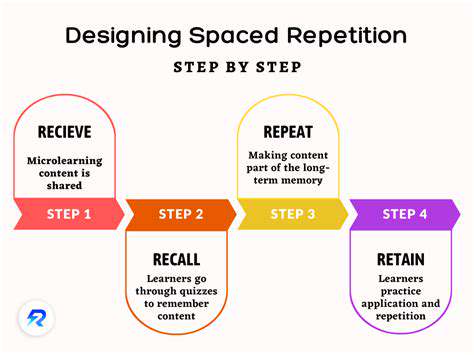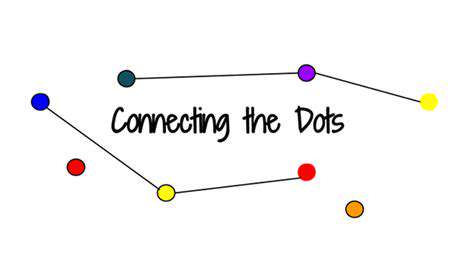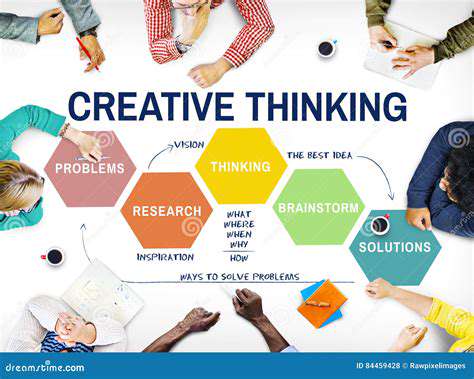Tips for Staying Focused During Long Study Sessions
Engage all senses to anchor attention. Chew mint gum only during study (scent-triggered recall), play brown noise (deeper than white noise), or trace concepts in the air with your finger. These multisensory inputs create neural Velcro for memory retention. When distracted, physically reset by standing, stretching, and reorienting to your study intention.
Creating a Supportive Study Environment
Form a study tribe with complementary strengths - the visual mapper, the quizmaster, the concise summarizer. Rotate teaching roles; explaining concepts to peers cements knowledge 90% better than passive reading. Use shared Google Docs with color-coded annotations or Miro boards for collaborative mind-mapping.
Decorate your space with process-focused reminders: Mistakes are data points post-its or a progress thermometer coloring in mastered topics. These psychological nudges reinforce growth mindset during frustrating plateaus. For virtual study sessions, enable cameras to maintain accountability and use Focusmate for scheduled co-working.
Eliminating Distractions for Maximum Productivity
Implement a phone jail - a locked container or faraway drawer during deep work sessions. Research shows mere phone proximity reduces cognitive capacity by 20%, even when powered off. For digital temptations, Cold Turkey Blocker schedules strict website blackouts, while Freedom app syncs across devices.
Create environmental friction against distractions: Face a blank wall, use noise-cancelling headphones with non-lyrical music, or position your desk to see approaching interruptions. This pre-commitment strategy leverages behavioral economics to make focus the path of least resistance. Signal focus time with visual cues - a red lamp, special study shawl, or Do Not Disturb sign in multiple languages for shared spaces.
Nourishing Your Body and Mind for Optimal Focus
Swap sugary crashes for brain foods: walnuts (omega-3s), blueberries (flavonoids), dark chocolate (theobromine). Hydration is cognitive lubrication - keep a marked water bottle to track 8-10 hourly glasses. For sustained energy, pair complex carbs (oatmeal) with proteins (almonds) every 3-4 hours.
Optimize sleep through sleep hygiene stacking: 1) 65°F room temperature 2) Sunset-simulating bulbs post-dusk 3) Magnesium-rich bedtime snack. REM sleep literally reorganizes neural connections - prioritize 7-9 hours like a student athlete values training. Power naps (20 mins max) can reboot afternoon focus without grogginess.
Time Management Techniques: Mastering Your Schedule

Prioritization Strategies
The Pareto Principle reveals 20% of tasks drive 80% of results. Color-code tasks using traffic light system: red (critical), yellow (important), green (delegate). Weekly MIT (Most Important Task) selection forces ruthless prioritization - ask If I accomplish only three things this week, what moves the needle most?
Apply Warren Buffett's 5/25 rule: List 25 goals, circle top 5, and avoid the rest like distractions. This brutal prioritization prevents priority diffusion - the enemy of deep work. For recurring tasks, implement the Two-Minute Rule - if it takes less than 120 seconds, do it immediately to prevent backlog.
Planning and Scheduling
Reverse-engineer deadlines using backward planning: Start with due date, identify milestones, then schedule work sessions. Time theming (e.g., Mondays for research, Tuesdays for writing) creates cognitive grooves for specific mental modes. Always buffer 25% extra time for unexpected delays - this Hofstadter's Law adjustment prevents schedule domino effects.
Breaking Down Large Tasks
Use the Swiss Cheese Method - puncture intimidating projects with small, timed holes (15-minute research bursts, outline drafts). This progress principle shows small wins boost motivation disproportionately. For writing tasks, the Pomodoro Drafting technique: 25 minutes of stream-of-consciousness writing, 5 minutes of structural edits, repeat.
Time Blocking
Implement task batching - group similar activities (email responses, grading, research) into designated blocks. Context switching between dissimilar tasks can waste up to 40% of productive time. Schedule focus blocks in 90-minute increments (matching natural concentration cycles) with 30-minute buffers for overflow or recovery.
Delegation and Outsourcing
Apply the ROI Test for delegation: If someone can complete the task at 80% quality for 20% time/cost, delegate. Create standard operating procedures (SOPs) for recurring delegatable tasks to maintain quality control. For academic work, explore collaborative tools like Notion for shared knowledge bases or Zapier for workflow automation.






![Guide to Learning [Specific Programming Language, e.g., JavaScript]](/static/images/32/2025-05/DelvingintoFunctionsandMethods3ABuildingBlocksofReusability.jpg)
![How to Improve Your Memory and Retention [Techniques]](/static/images/32/2025-05/OptimizingYourLearningEnvironment3ASettingtheStageforSuccess.jpg)




